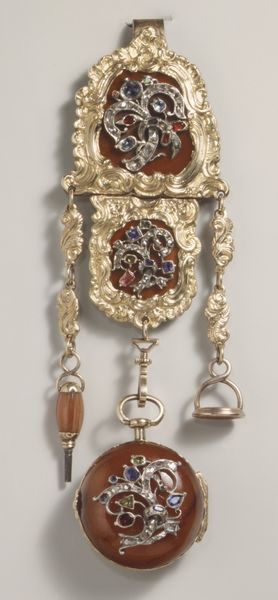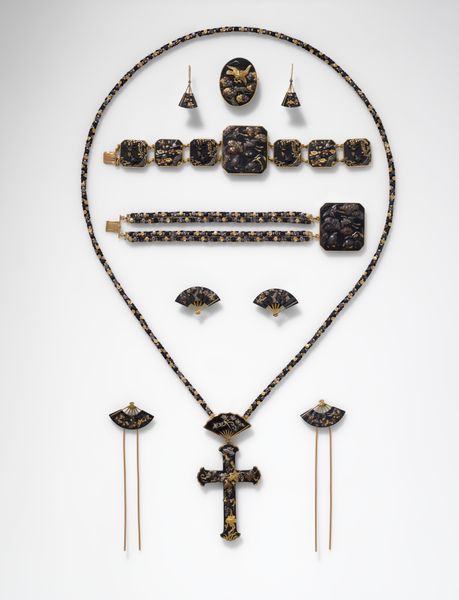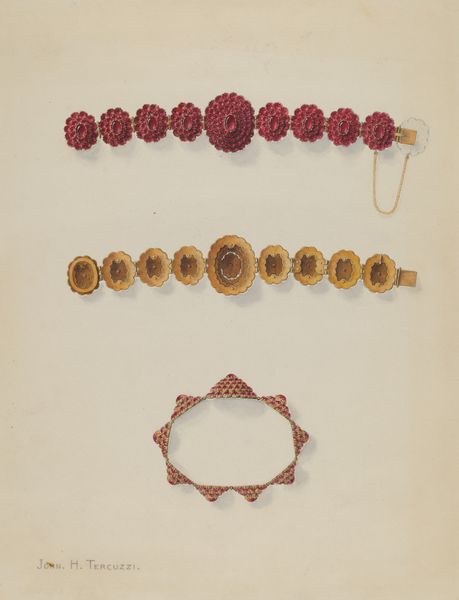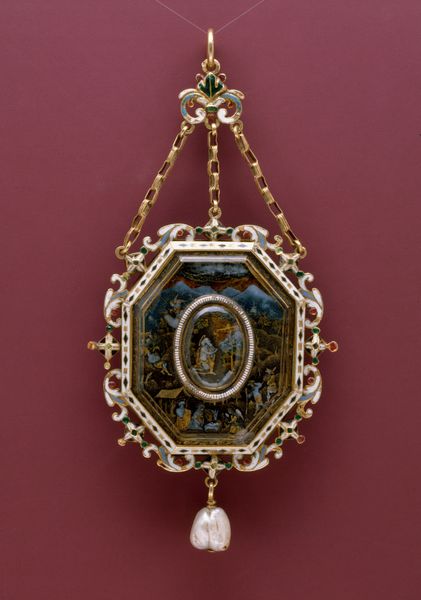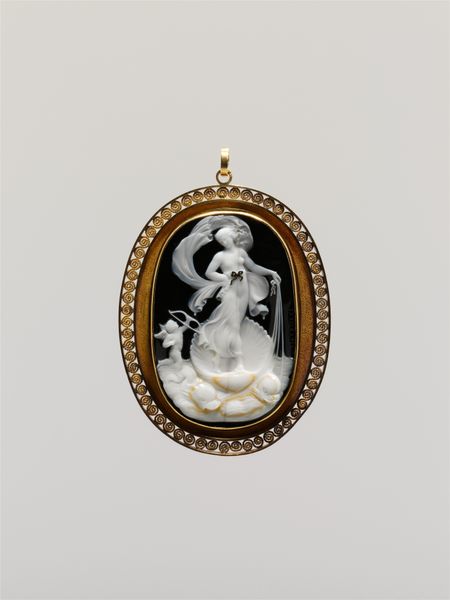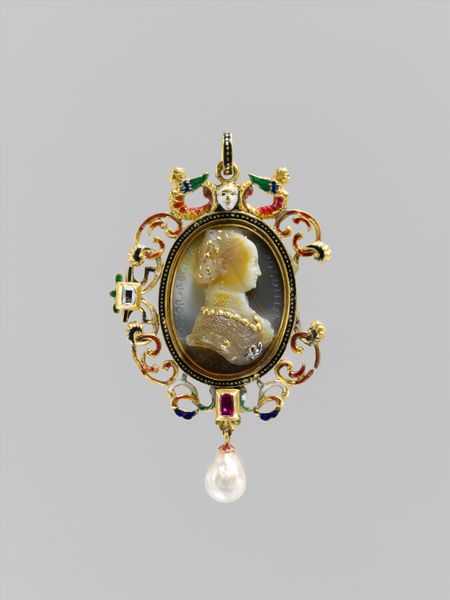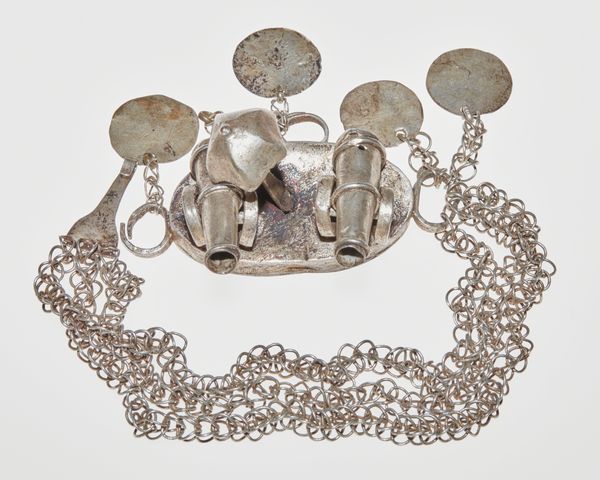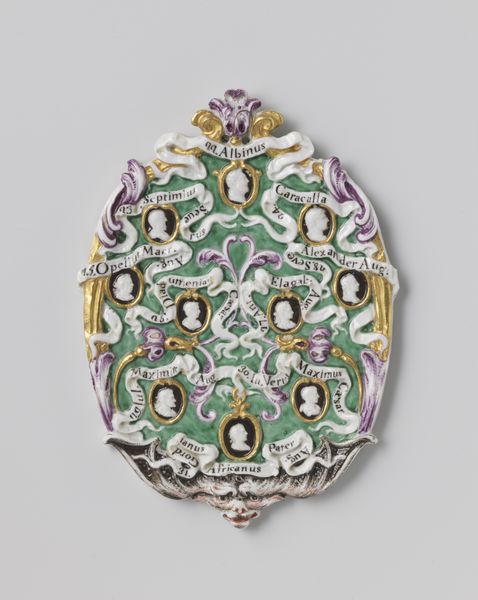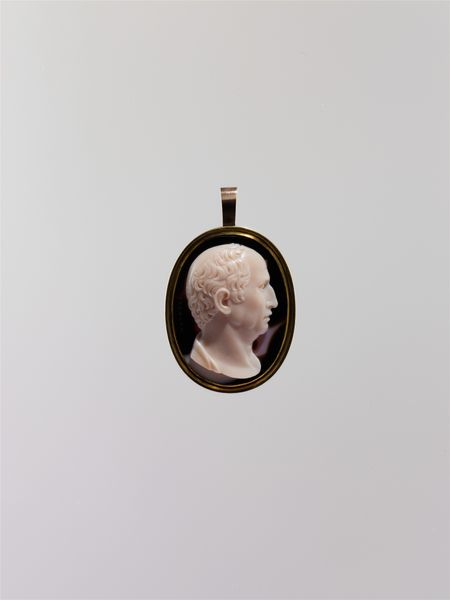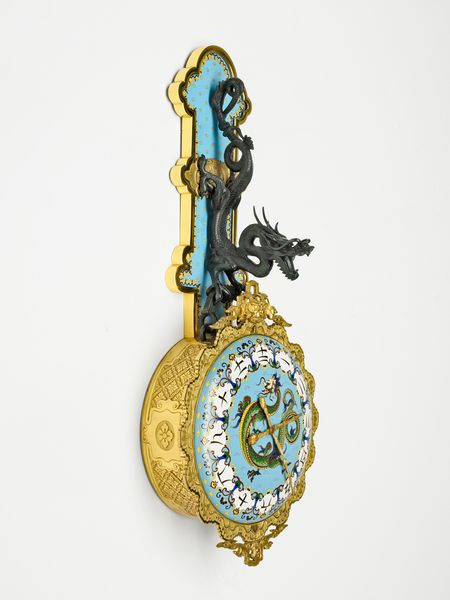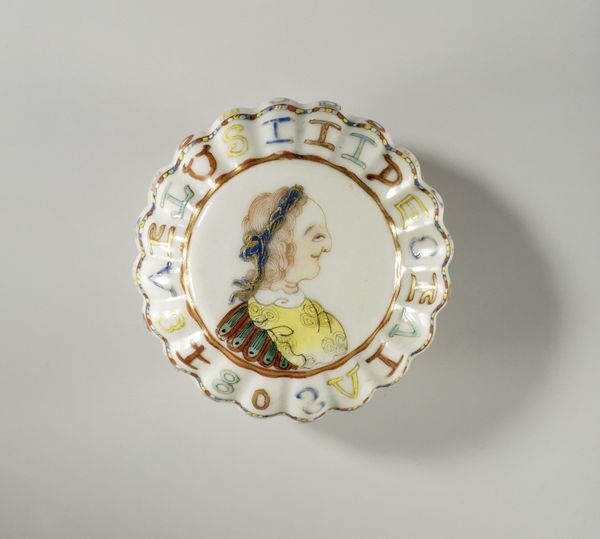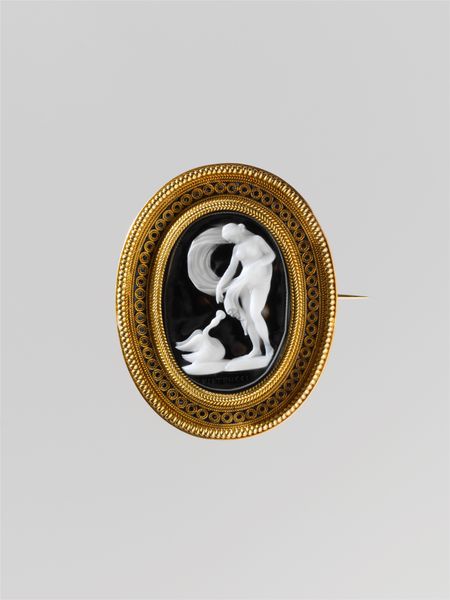
carving, metal, gold, sculpture
#
neoclacissism
#
carving
#
metal
#
gold
#
jewelry design
#
sculptural image
#
sculpture
#
decorative-art
Dimensions: Diadem, visible cameo: 1 13/16 x 3 1/16 in. (4.7 x 7.8 cm); 46.8 x 78 mm; Diadem, overall with setting: 2 1/4 x 5 5/8 in.; Brooch, visible cameo: 1 11/16 x 1 5/16 in. (4.3 x 3.3 cm); 42.6 x 33.4 mm; Brooch, overall with setting: 2 1/16 x 1 11/16 in.; Necklace, overall length: 17 1/2 in. (43.8 cm) Necklace, visible cameo at clasp: 20.2 x 14.6 mm; visible cameo at PL: 26.7 x 20.9 mm; visible cameo at center: 29 x 23.1 mm; visible cameo at PR: 27.2 x 20.7 mm
Copyright: Public Domain
Editor: Here we have "Parure: tiara, necklace, and brooch" made sometime between 1830 and 1865, created by Luigi Saulini. The parure consists of carved cameos in gold and other metals. I'm immediately drawn to the craftsmanship, particularly how the white figures pop against the dark background. How do you interpret this work through a historical lens? Curator: Well, seeing this parure, particularly its Neoclassical style, tells us a lot about the aspirations and social values of the period. It reflects a deep fascination with classical antiquity, which wasn’t just about aesthetics, but about connecting to perceived ideals of order, reason, and civic virtue. Where do you think such imagery would circulate? Editor: I imagine that high-society people wore it and would be something found within the upper echelons of social life? It seems meant for display. Curator: Precisely. The wearing of such jewelry was performative. The owners displayed their wealth, refined taste, and association with a classical ideal. It's a way to signal one’s place in a social and cultural hierarchy. In essence, this parure is about much more than adornment; it's about constructing and communicating identity within specific social contexts. Why do you think there was so much interest in antiquity in the 19th century? Editor: Perhaps they were yearning for a bygone era? Curator: Exactly! In a rapidly industrializing world, invoking the perceived stability and elegance of the classical era offered a sense of continuity and legitimacy. These kinds of luxurious objects have to be considered through these layers of meaning, as statements of status and taste that circulated within elite social circles, helping to define social hierarchies and cultural values. What did you learn from our discussion? Editor: The parure tells the history of cultural fascination in classical antiquity within the elite circles of society.
Comments
No comments
Be the first to comment and join the conversation on the ultimate creative platform.
